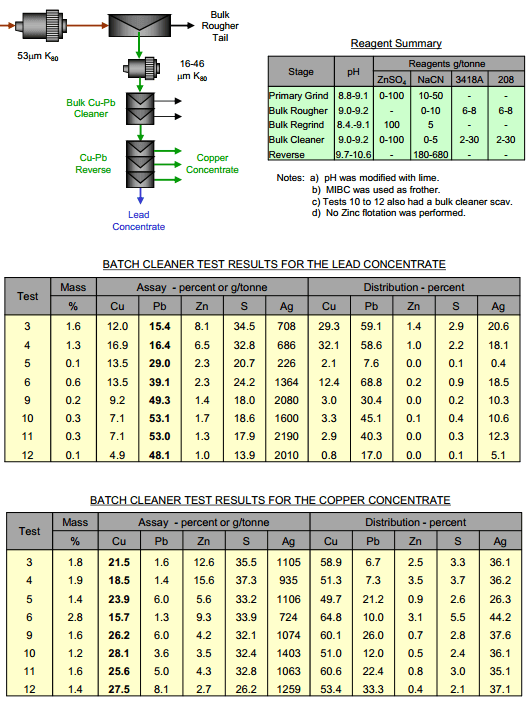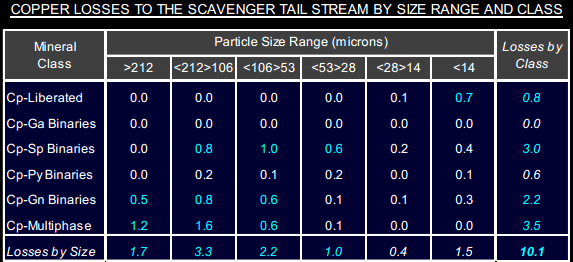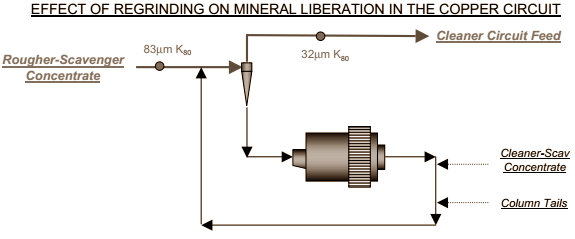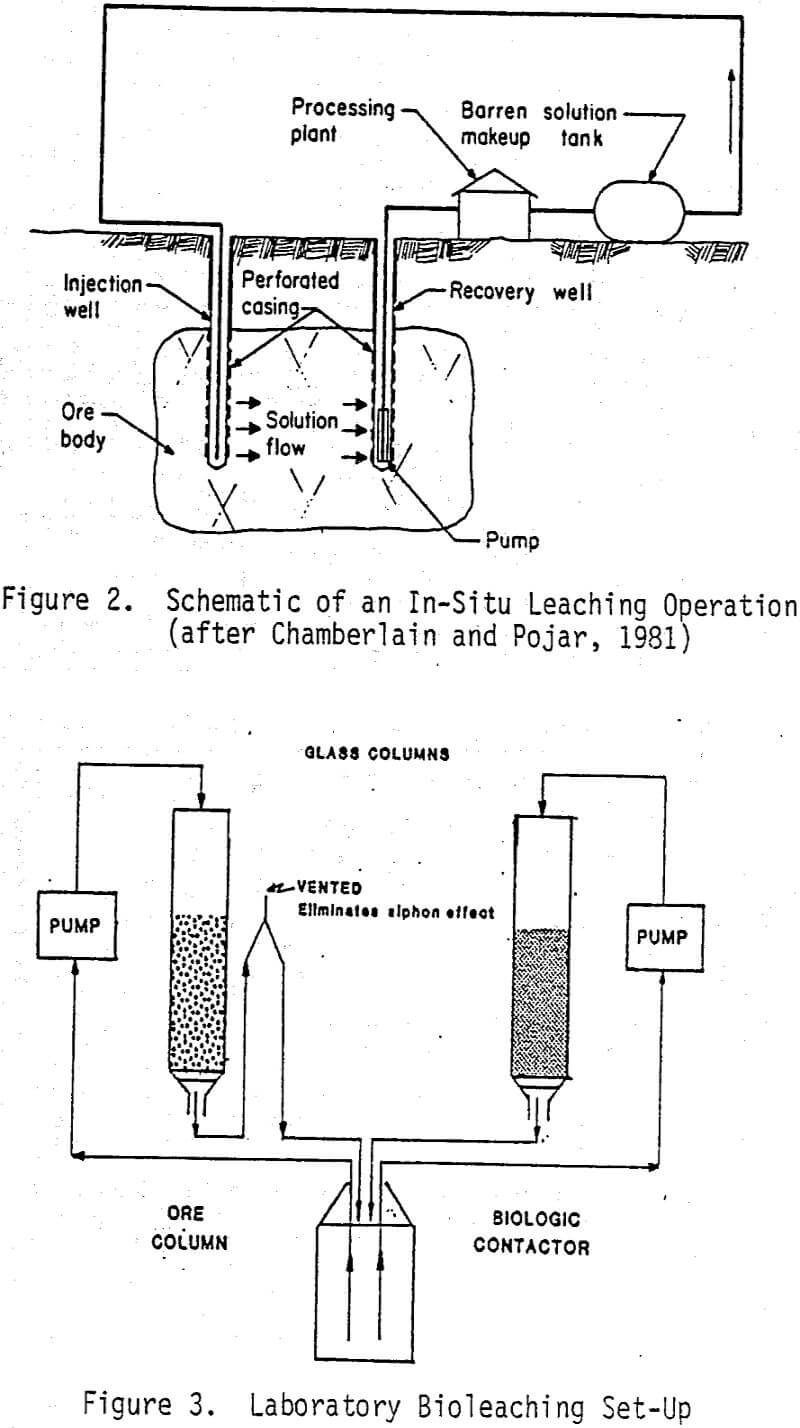How to Separate Copper from Lead by Cu Depression

How you separate Pb from Cu depends on how much of each metal is present. You best depress the metal that’s the most present, the metal you have the most of & you float the metal you have the least of. In this case, flotation of a small amount of lead from the copper concentrate would […]
Measure and Evaluate Flotation Tail Losses

In this example, the losses of chalcopyrite to the copper scavenger tail is equivalent to about 10 percent of the copper in the ore. Losses of liberated chalcopyrite are minimal accounting for less than 1% of the copper in the feed. Most of these losses occurred as grains sized smaller than 14µm in equivalent diameter. About 55% of the […]
Effect of Regrinding

To ensure adequate mineral liberation is achieved ahead of the dilution cleaner circuit, a regrind mill is installed on the combined copper rougher-scavenger concentrate stream. See below the mineralogically limiting grade recovery chart, summarizing the theoretical limits to metallurgy imposed by the mineralogical associations in the cleaner circuit streams: Regrinding of the copper rougher-scavenger […]
Gold & Copper Bioleaching

Bacterial Leaching of Copper Ores Several types of bacteria capable of living in an acid environment have been isolated from copper mine waters. The foremost of these are of the genus Thiobacillus (T.). Thiobacillus bacteria are acidophilic aerobic chemolithotrophs which grow most rapidly at a pH in the range of 2-3. T. ferrooxidans derive their […]
Fluorine Penalties of Copper Concentrate
F Penalties often start at 300 – 500 ppm which is to say 300 ppm in Japan / Korea and perhaps ~ 500 ppm into China. Penalty scales of US $1- 2/dmt per 100 ppm. Some cases Fluorine (F): US $1.00 per dmt for each 100 ppm over 300 ppm Others F: US $2.00 per […]
